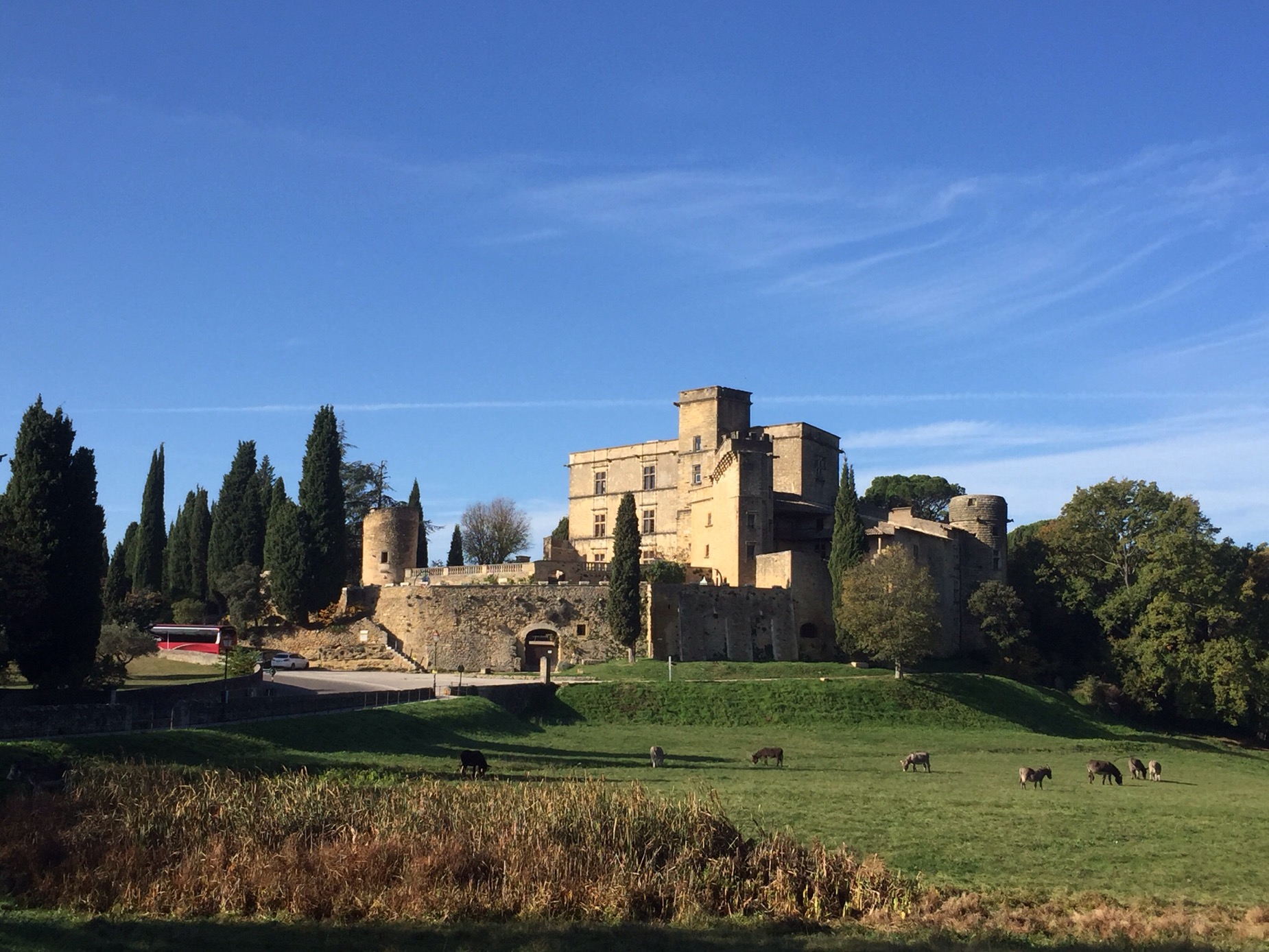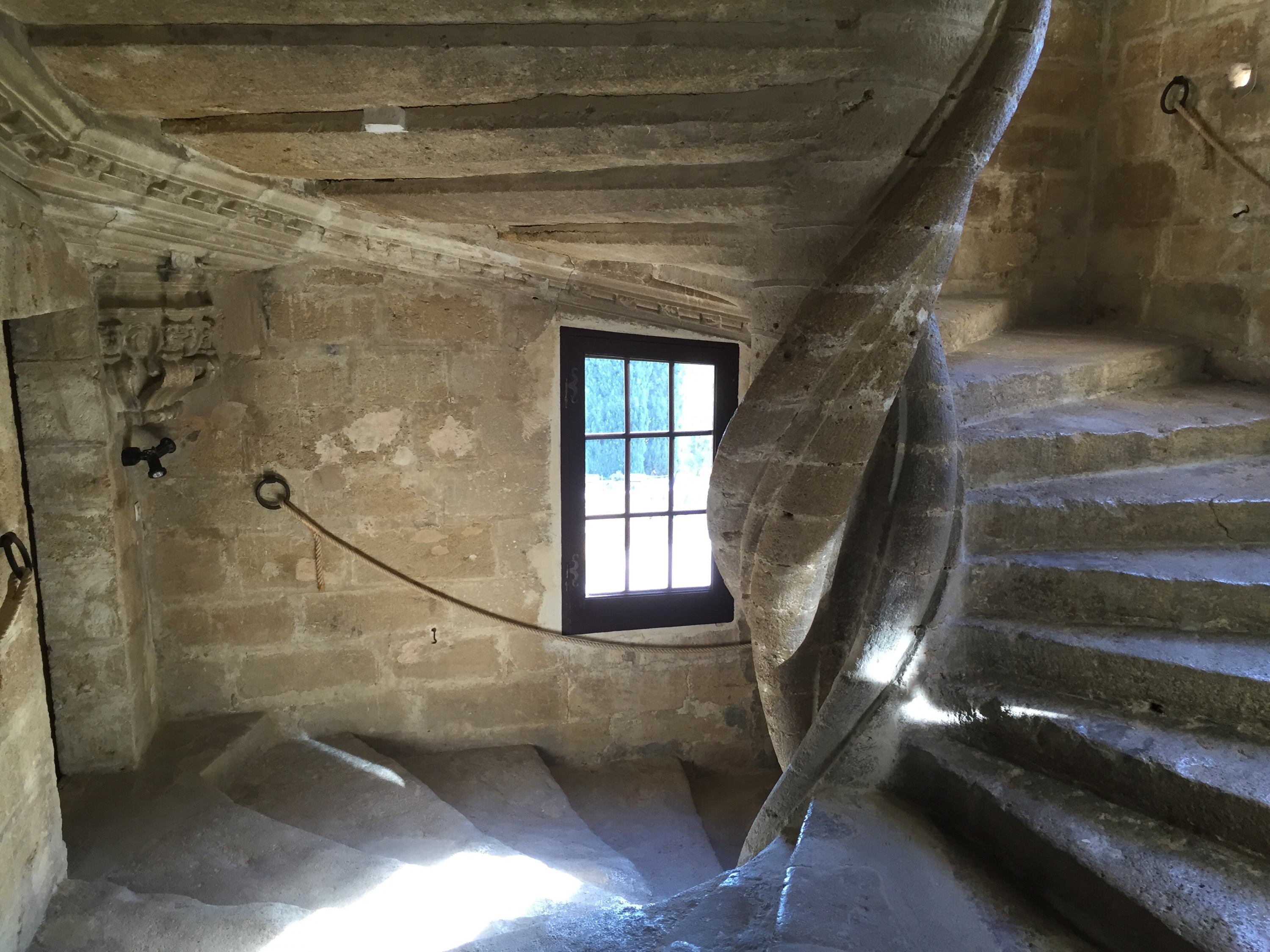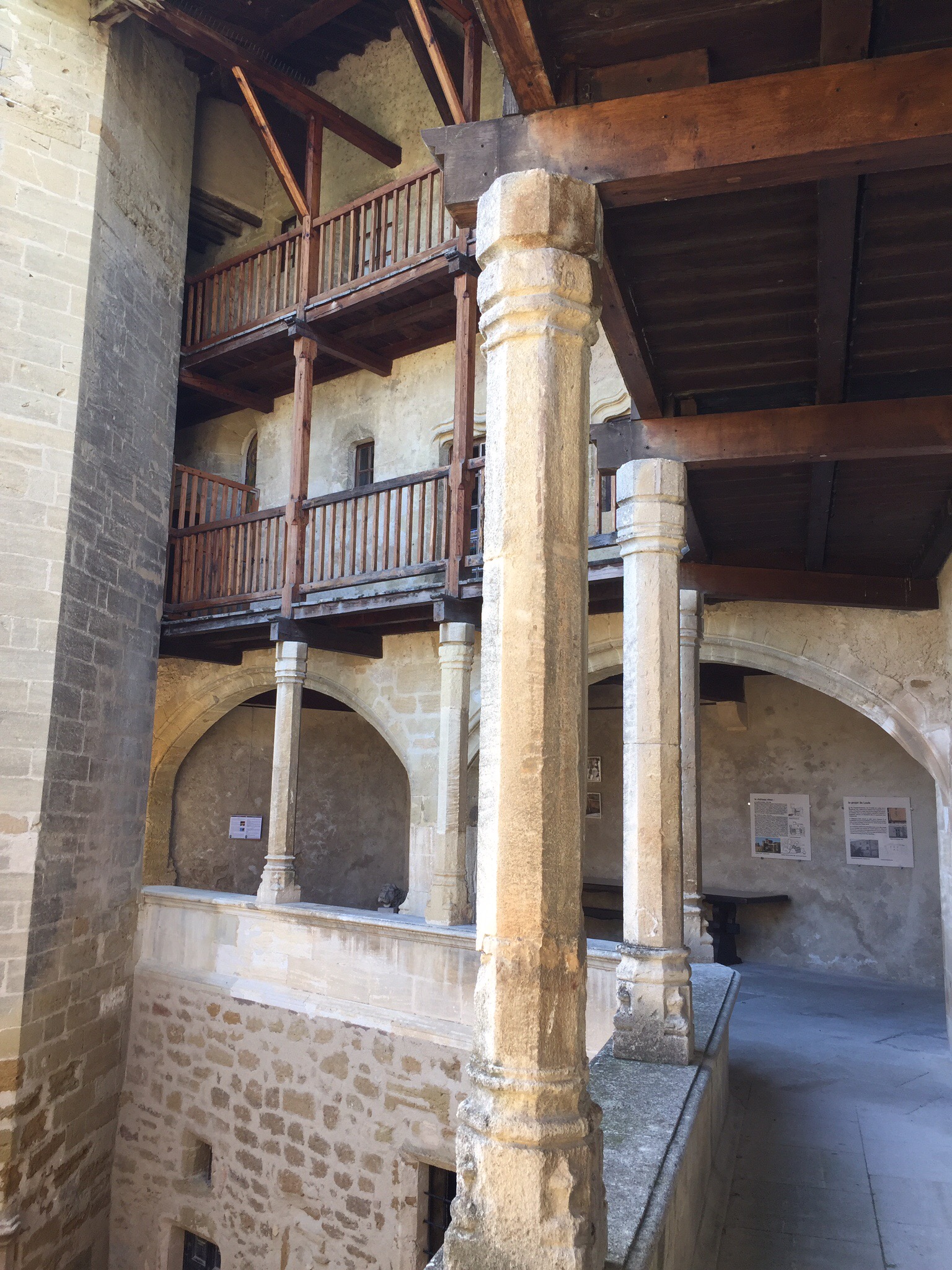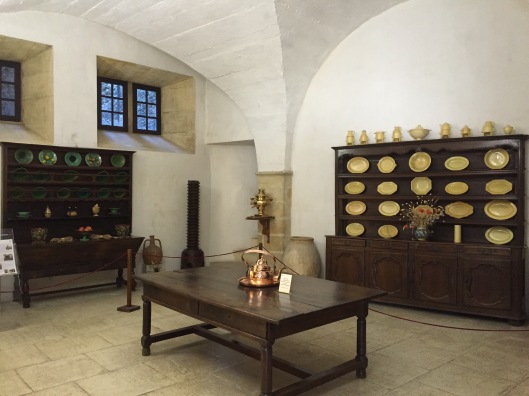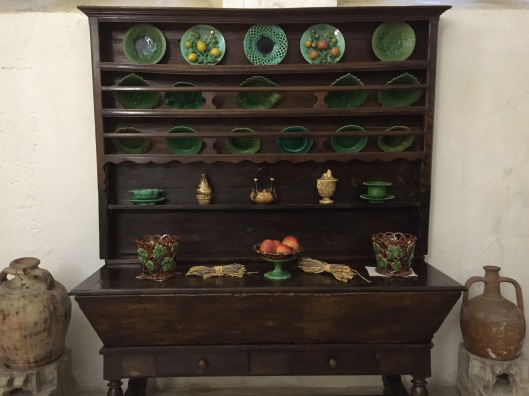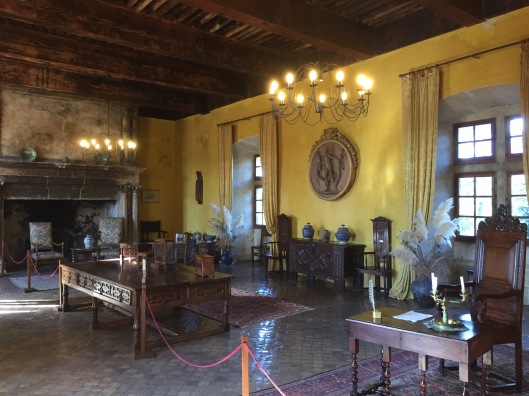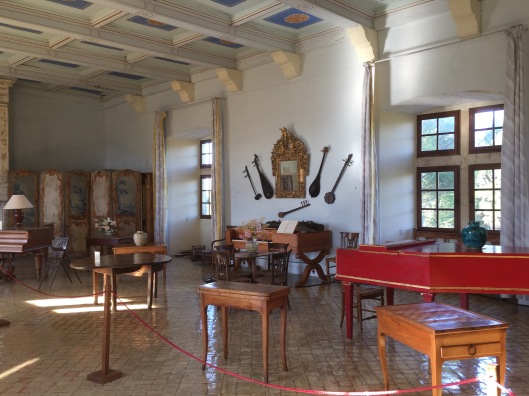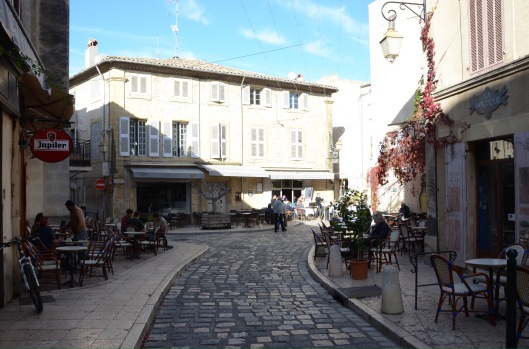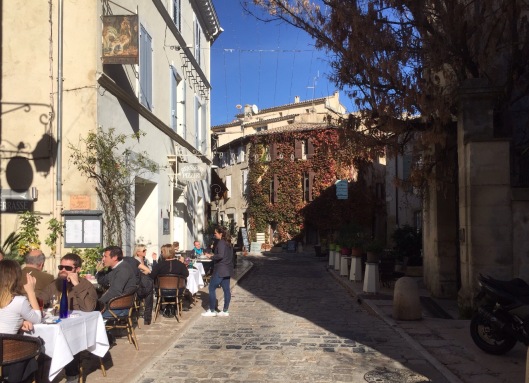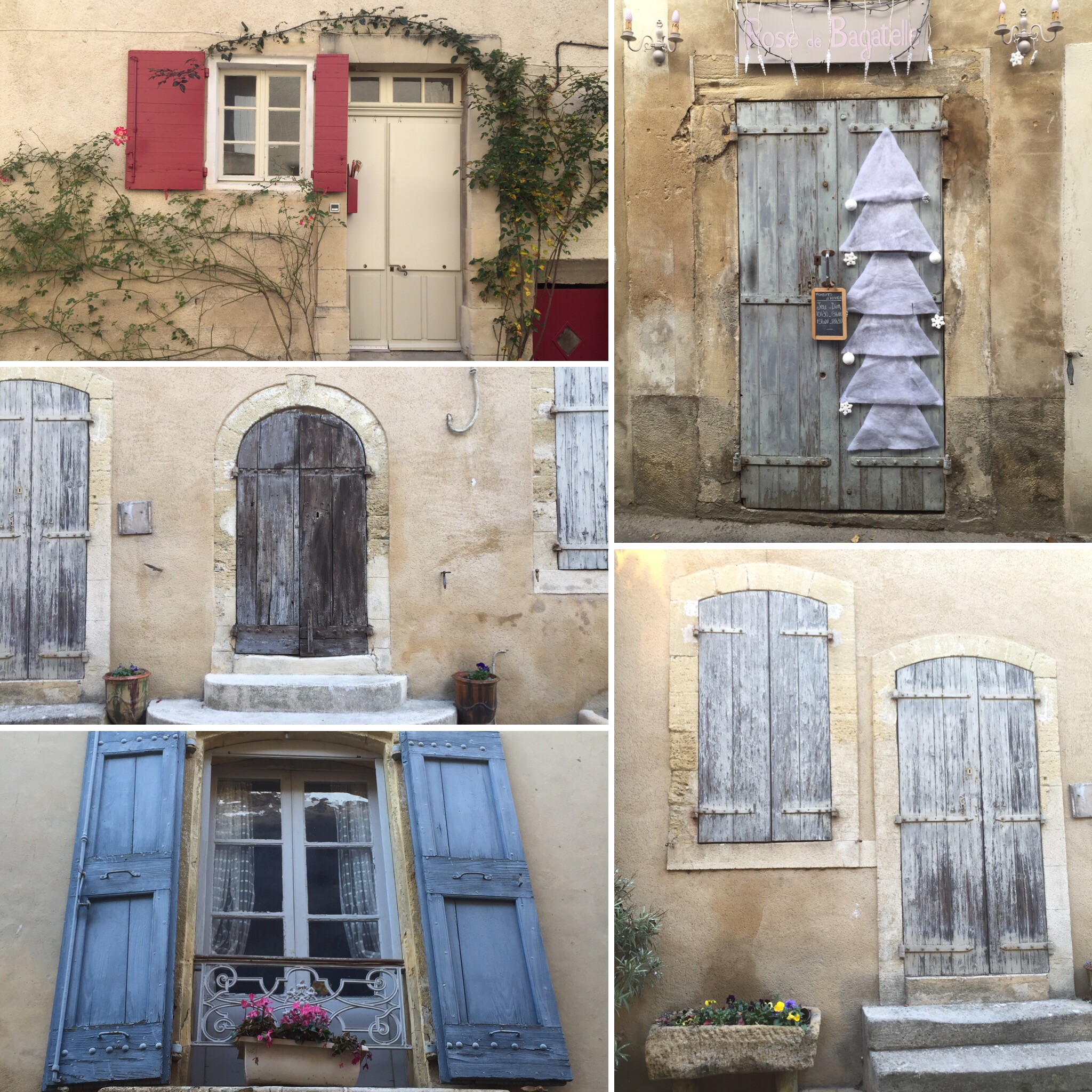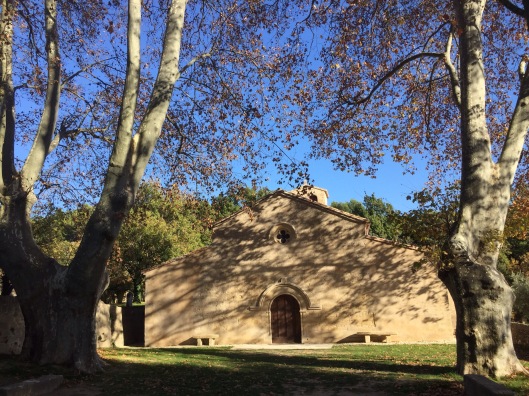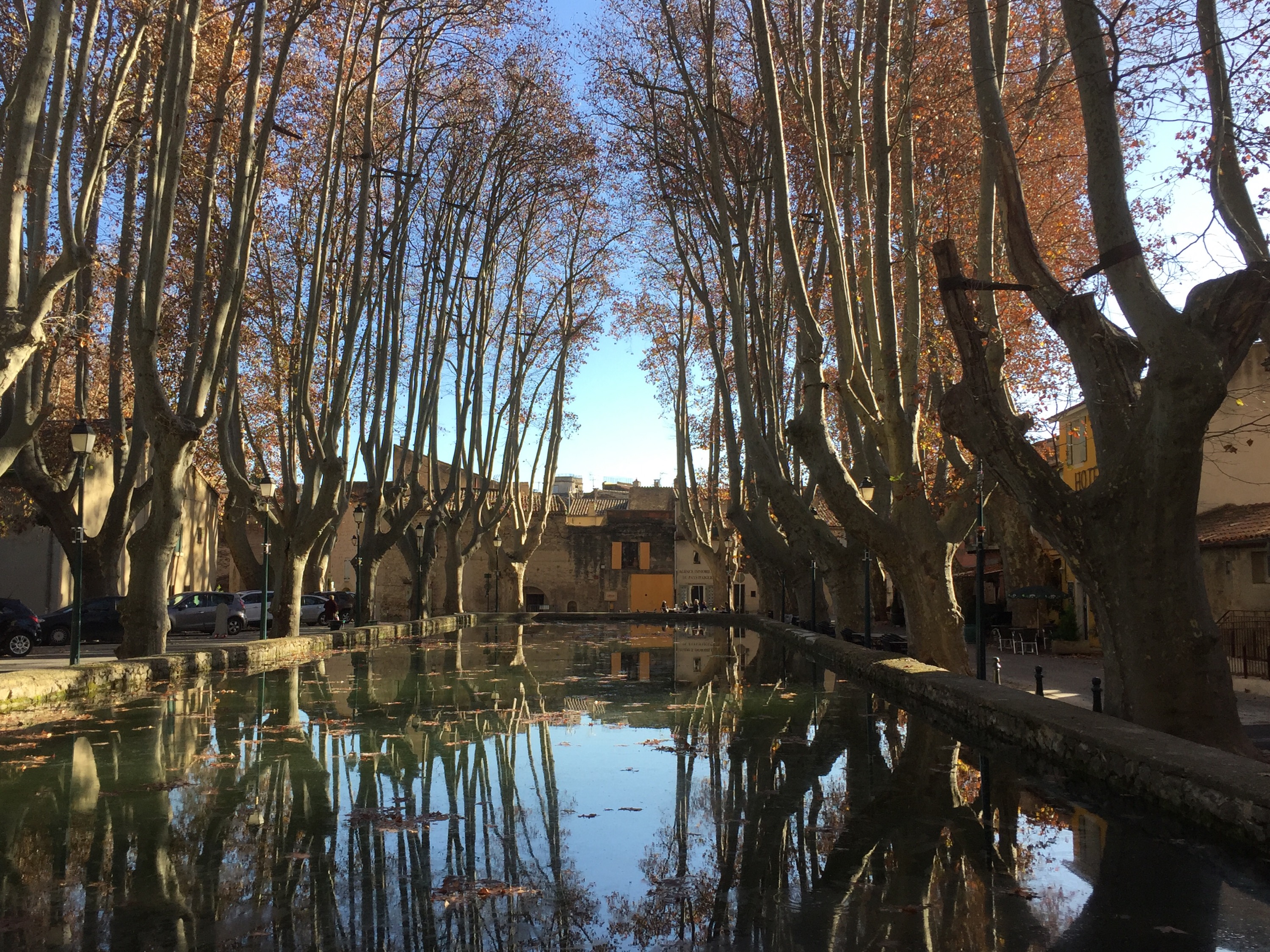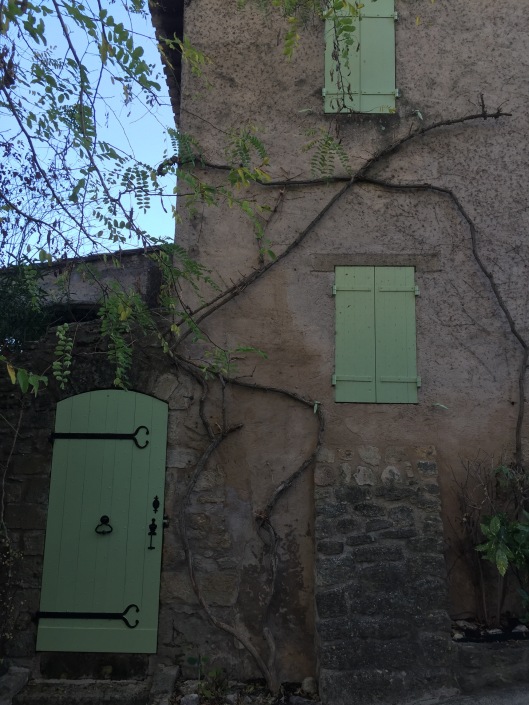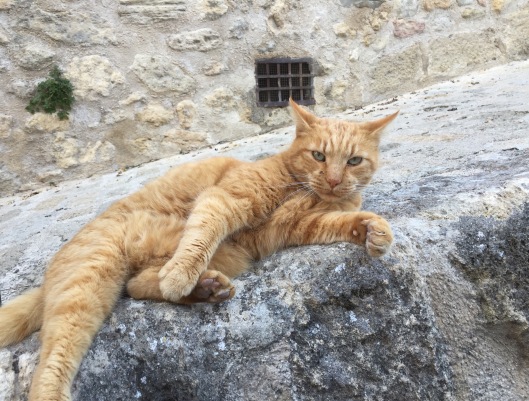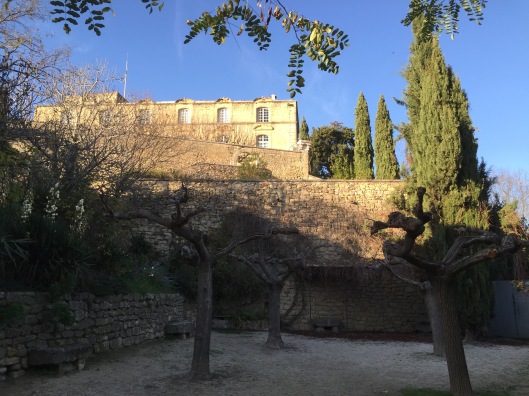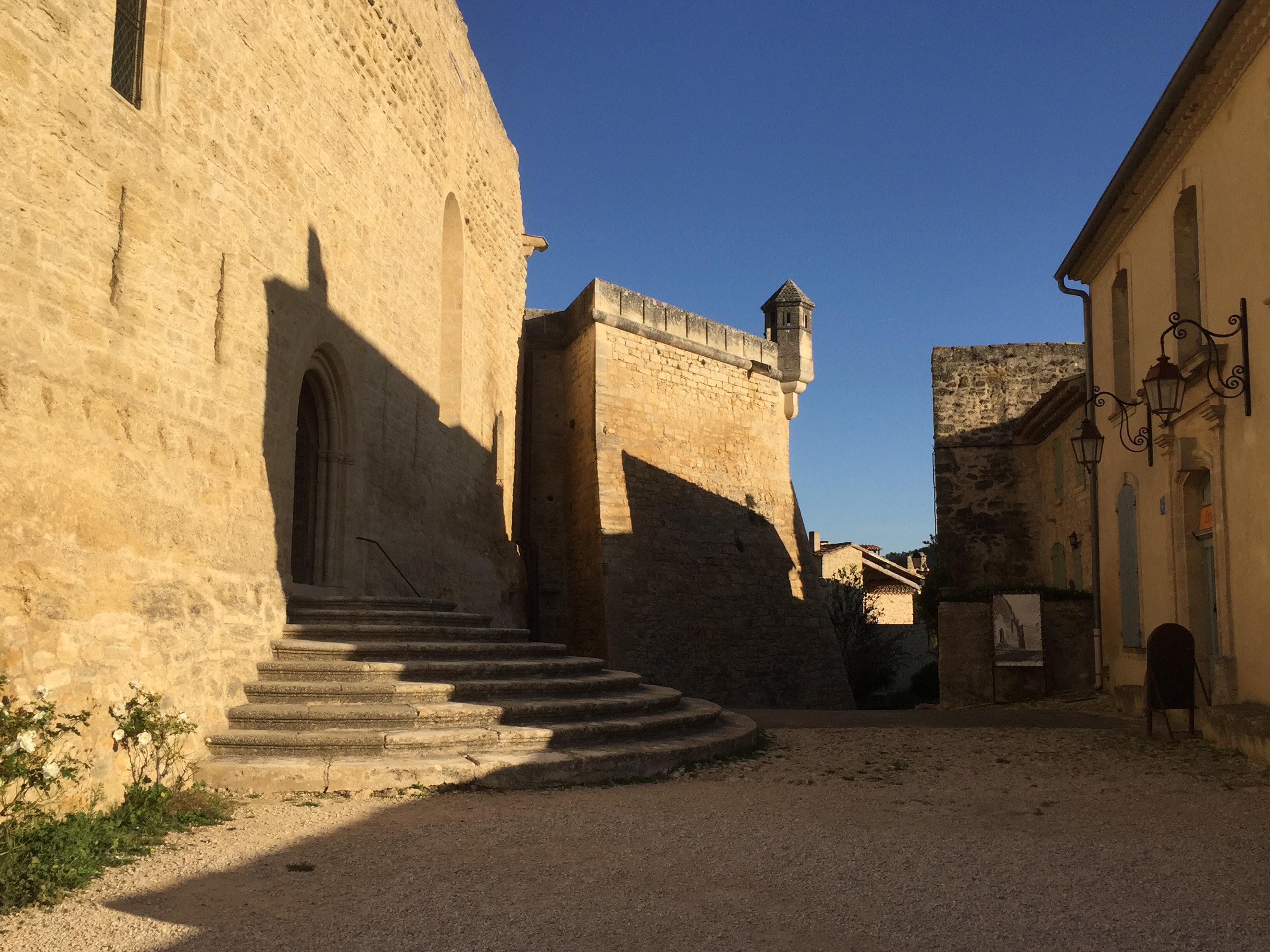Tags
Ansouis, chateau, church, Curmuron, Jean de Florette, Lourmarin, Luberon, Marcel Pagnol, Peter Mayles, Plus Beaux Villages, Provencal, Vaugines
Yesterday we did a circuit around a small area of the Luberon in Provence, and were treated with four lovely villages, three of which are designated Plus Beaux Villages of France.
After a drive along winding road through cliffs and forest, with a few hairpin bends, our first stop is Lourmarin in the Natural Regional Park of the Luberon and the first of the Plus Beaux Villages we are to see. The village is infamous for its connection with the Peter Mayles and his book Year in Provence, but there is much more to it than that.
The village has had quite a past, suffering the Bubonic Plague in the 14th century which caused the death of most of its inhabitants. From the late 15th century the Lord of the region encouraged families from the Southern Alps to settle here. Known as Waldensians, they were followers of Vaudès (1140-1206) and condemned by the Catholic Church as heretics. In the next century the village was destroyed in 1543 during the wars of religion. It was not until the 17th century with the introduction of silk farming that Lourmarin prospered again.
As we arrive at Lourmarin, the Château de Lourmarin looms into view across a field of grazing donkeys. We head straight there keen to see inside before it shuts for the obligatory couple of hours at lunchtime.
Even though Lourmarin is not a hilltop village, there are beautiful views from the chateau’s courtyard around which are two distinct sections, a 15th century medieval building and an elegant 16th century Renaissance wing.
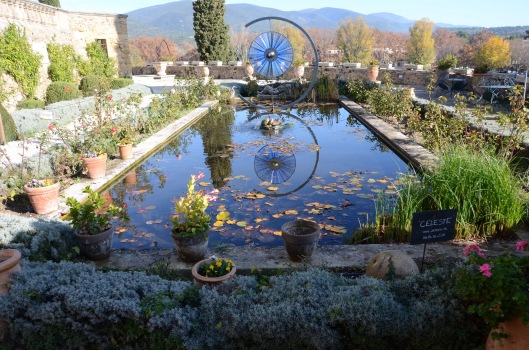
The chateau was built in three stages starting with a fortress in the 12-13th centuries of which little remains. The “Château Vieux” or Old Château was added in the 15th century. The Renaissance wing – the “Château Neuf” or New Château – was built in the 16th century by Blanche de Lévis-Ventadour for her son François d’Agoult, who was a page at the court of King François the 1st.
It was saved from demolition in 1920 when it was bought and subsequently restored by Robert Laurent Vibert, an historian and industrialist. On his untimely death he left the chateau, his art, furniture and libraries to the French Academy for Art and Science in Aix-en-Provence, on condition that it hosts young writers, painters, sculptors and musicians there every summer.
We follow the printed guide and start with the medieval section. Immediately I am struck by the craftsmanship of the beautiful double spiral staircase in the octagonal tower, with its carved cornices and ceiling frieze featuring animals and plants. This takes us to three levels of galleries surrounding a closed courtyard.
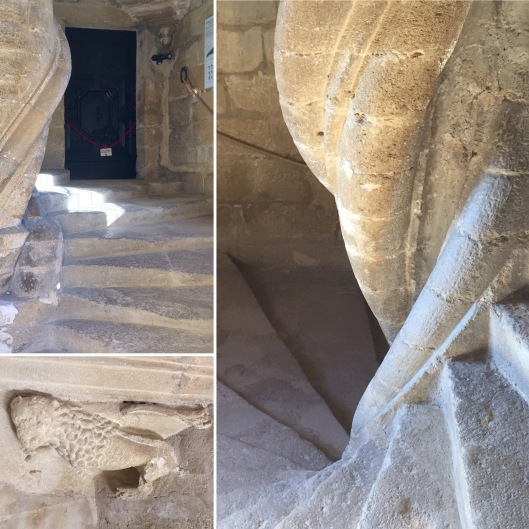
After we have been through this section we descend the staircase and enter the second wing. We visit the spacious rooms which hold a fine collection of art and furniture which belonged to Laurent-Vibert who saved the chateau from destruction in 1920.
There is a kitchen with a huge fireplace and a magnificent concert room in the former dining room on the ground floor. On the next floor we see a lady’s chamber, furnished in 18th century Provençal style, a reception room and small salon. On the second level is a gentleman’s chamber, music room and a salon currently holding an exhibition of art and memorabilia from the war trenches of 1843 to 2003.
Leaving the chateau we walk down into the charming village with its beautiful houses and decorated fountains.
It’s a cultural centre for the region and has many art galleries, cafes and restaurants, although many are closed being a Monday.
In the centre of the village where the roads meet there are tables everywhere on the sidewalks gradually filling up as people dine in the sunshine.
After an enjoyable lunch we head 15 minutes away to the tiny village of Vaugines. A simple but charming place it is famous as the setting for the French films ‘Jean de Florette’ and ‘Manon des Sources’, adapted from books written by Provencal author Marcel Pagnol.
Next on our way to Ansouis, we decide to take a look at Curcuron, the second of the Plus Beaux Villages on our circuit. It features a beautiful water pool in the main square which is large enough to resemble a small lake. This area is shaded by towering, 200-year-old plane trees with the last of their autumn leaves, making it a lovely setting for outdoor drinking and dining.
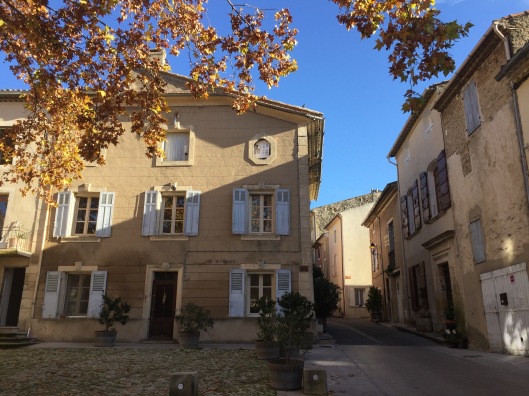
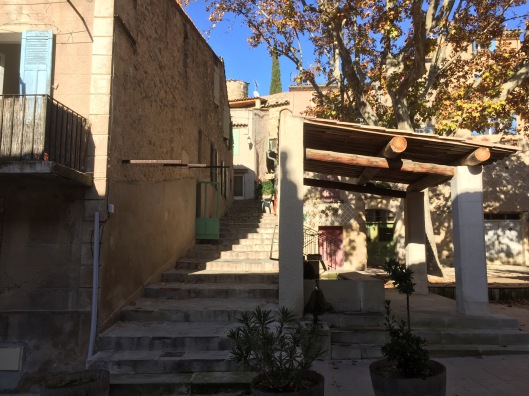
The present village dates from earlier than the 11th century. It also suffered a plague epidemic in 1720. We take a walk around the medieval part of the village inside the old rampart walls up to the church. In May there is a local festival featuring the ‘May tree’ when a poplar tree is erected on the church square, reflecting a practice in the 18th century to ward off the plague.
From the high points of the village you can see Mont St Victoire, the Alpilles, and the Luberon mountain close by. The countryside is lush with vineyards, olive plantations and cherry orchards.
Like Vaugines, Curcuron has also featured in film including A Good Year and The Horseman on the Roof (Le hussard sur le toit).
Our final stop on this circuit is Ansouis, also one of the Plus Beaux Villages, dating back to the 15th century.
There are picturesque squares and cobbled streets leading up to the 1000-year-old privately owned chateau. This isn’t open unfortunately but we do go into the adjacent little church of St Martin. Despite being 900 years old, it features brightly coloured painted walls.

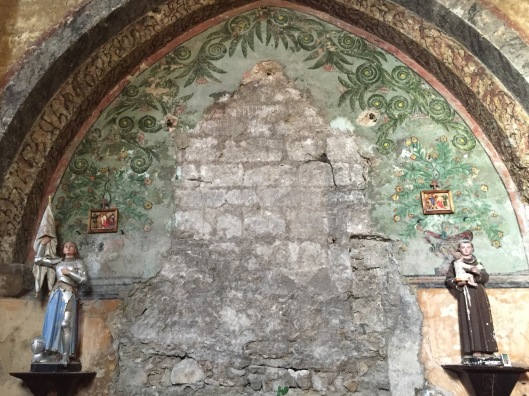
We don’t get time today to visit the Musée Extraordinaire which houses one man’s collections of things he found while diving the oceans over 50 years, as well as his paintings, sculptures and fossils found inthe region.
The day’s travels shows how much there is to see in each small pocket in Luberon, and of course Provence.

